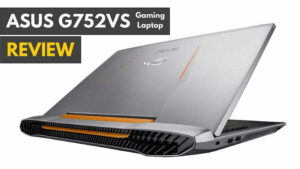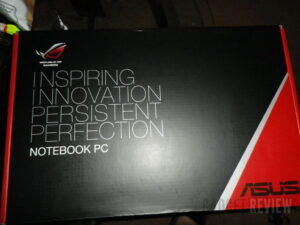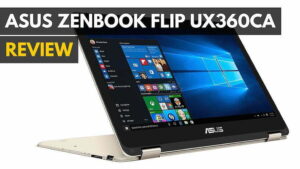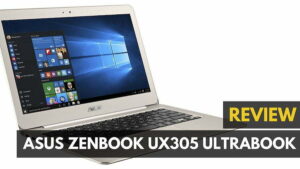The Zenbook Pro UX501VW is another in a long line of ASUS laptops that try to be everything to everyone at once, by including all the features the average user could want while also pumping things up for professionals with the addition of a 4K touchscreen display and a screaming-fast 512GB PCIe SSD. But will the tactic of throwing in high-end components on a laptop that can barely run games at 4K be the laptop’s eventual downfall?
Read on in my ASUS Zenbook Pro UX501VW review to discover more about this top-tier laptop.
Overview
Price: $1,499.99 on Amazon
Available: March 2016
Model #: UX501VW-US71T
Summary: The ASUS Zenbook Pro UX501VW has its hands in a lot of different jars thanks to its 4K touchscreen display and if you’re a programmer or a designer or a student it could be the right choice, but unfortunately it’s also bogged down by poor gaming performance and abysmal battery life and just a little too much weight around the edges.
What We Liked
- Beautiful aluminum design
- 4K touchscreen display features solid color accuracy
- Keyboard was comfortable for long typing sessons
What We Didn’t
- Heavier chassis might burden some
- Battery life was next-to-nothing
- Graphics performance was lagging behind
Related: In case you want to check other laptops, read the Asus Zenbook Pro Duo review
ASUS Zenbook UX501VW Specs
| ASUS Zenbook UX501VW | |
|---|---|
| Processor | Intel Core i7-6700HQ 2.6GHz |
| RAM | 16GB DDR4 RAM |
| Storage Space | 512GB PCIe SSD |
| Display Size | 15.6″ |
| Graphics Card | Nvidia GTX 960 2GB |
| Display Resolution | 3840 x 2160 |
| Touchscreen | |
| Battery Life | 1hr 24min full-load/4hr 09min idle |
| Weight | 5 lbs |
| Dimensions | 10 x 15.1 x 0.8 inches |
| Price | $1,449.00 |
| Buy Now |
Design
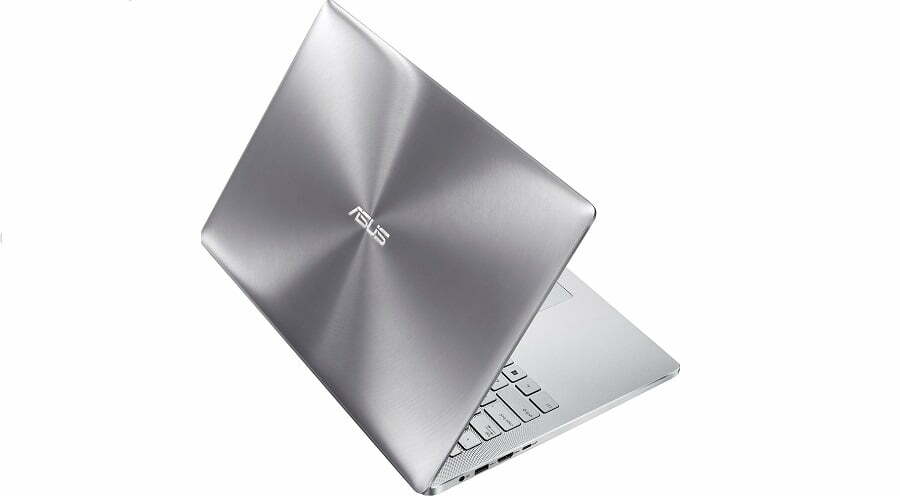
With the “Pro” moniker tagged onto the model name of the Zenbook Pro UX501VW, it doesn’t take a marketing wizard to figure out which part of the market ASUS is trying to target with this latest release. Although it may not be as slim or sleek as a Macbook Pro, the ASUS still borrows many of the same design elements from Apple’s flagship line while incorporating some of its own unique flair on top.
Related: Take a look at the Asus Zenbook UX305CA review
The all-aluminum chassis is a nice touch, and the casing around the screen is solid enough to make it feel like it could almost be a detachable tablet on its own if ASUS ever wanted to go the convertible route and move into the realm of 4K tablets instead. Two speaker-esque spirals of black dots sit on the top left and right corners of the keyboard, which give the Zenbook a little flair but also won’t make you look out of place if you whip it out at an office meeting either.
Unfortunately the Zenbook is quite a bit heavier than most competing laptops in this category at a flat 5lbs, so if you’re looking for ultimate portability you might be better off picking something else, such as one of the top ultrabooks of 2018 or the lightest ultrabooks.
Software
If ASUS and MSI were having a competition for which company could include the most unnecessary bloatware in their machines, the latest Zenbook UX501VW might be just what ASUS needs to pull out into first place.
From the moment we booted the Zenbook for the first time we were inundated with useless apps like “ASUS Live Update” and “ASUS Installer” that pestered us to no end, followed by the inevitable crawl through the Start menu’s app list to find stragglers like the “ASUS Giftbox” and a Realtek Audio Manager app even though the model we tested doesn’t even have Realtek components installed on it.
I’ve made no allusions about my hatred for these tackily sloughed on pieces of software, and find it hard to imagine a scenario where any of it is remotely useful to the average user. I’ve said it before and I’ll say it again: if I want to use it, I’ll download it myself. Until then, stop shoving it down my throat, slowing down my laptop, and let me use the device how I want without all your extra suggestions that try to me nudge me further toward your nonsense with endless notifications, buggy code, and a deluge of ultimately pointless programs.
Hardware
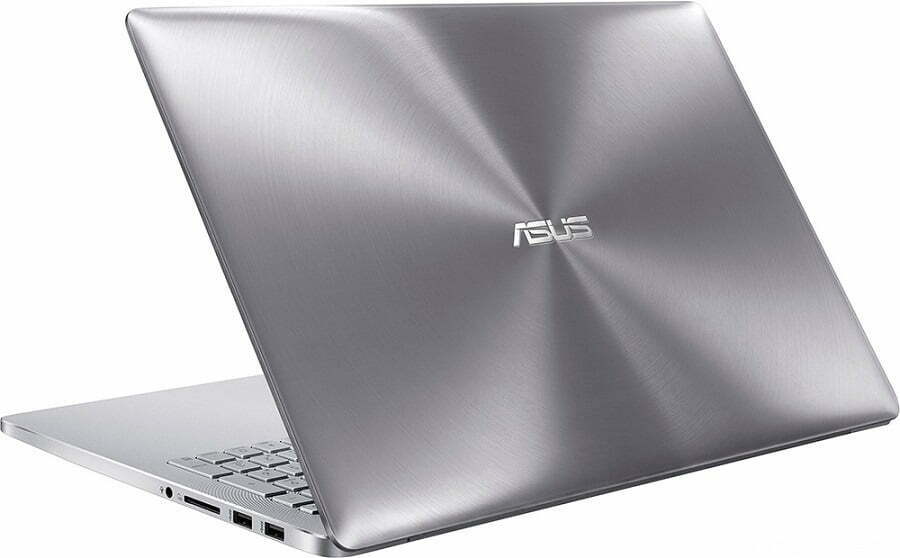
Because the ASUS UX501VW is made to compete with laptops like the Macbook, its spec list isn’t all that revolutionary but rather falls in line with about a dozen other devices we’ve reviewed that are made for professionals, students, and the enterprise set. The Zenbook features a quad-core Intel Core i7-6700HQ processor, an Nvidia GTX 960M 2GB graphics card, 16GB of DDR4 RAM, and a 512GB PCIE SSD. Connectivity options were all top of the line, including the latest in Thunderbolt 3 technology, alongside three USB 3.0 Type-C ports, one HDMI 1.4 out, a 3.5mm audio out, and an SD card reader.
Some potential buyers may be disheartened to see that the Zenbook doesn’t come with a built in Ethernet port for a dedicated hardwire connection – much like the Asus Zenbook UX305CA – but ASUS was sure to include a USB-to-Ethernet adapter in the box in case you need the most speed possible while you’re on the road or at home.
When I first opened up the laptop, I was excited to see the “Audio by ICEpower | Bang & Olufsen Technology” label scrawled across the top of the keyboard, leading me to believe the onboard speakers would be as top-notch as they come. Unfortunately, as soon as I turned on some music those hopes were quickly dashed. The two small speakers hidden underneath opposing sides on the device were painfully quiet, and lacked any real distinct bass to speak of. The day was saved slightly once we plugged in a pair of headphones, however, as the Zenbook pumped out some seriously strong sound from its onboard audio port into my favorite headphones.
Speaking of the keyboard, the ASUS Zenbook UX501VW sports one of the most comfortable I’ve ever used, helped in due part by the 15.6″ screen size which leaves plenty of room for keys that are evenly spaced and highly responsive to boot. The trackpad was a little more of a sticking point though, because even though it was responsive, it took some tweaking to get it to a place where it felt like my finger swipes and the movement of the cursor were synced up completely.
Performance
| Fire Strike (3DMark) | SkyDiver (3DMark) | Cloud Gate (3DMark) | TimeSpy (3DMark) | Geekbench 3 (Single-Core) | Geekbench 3 (Multi-Core) | |
|---|---|---|---|---|---|---|
| MSI GT73VR 6RF Titan Pro | 15210 | 29867 | N/A | 6215 | 4308 | 16513 |
| MSI GE62VR Pro Apache | 9470 | 20702 | N/A | 3547 | 3664 | 12994 |
| ASUS ROG GL752VS | 13961 | 30069 | N/A | 5272 | 3364 | 13472 |
| ASUS Zenbook Pro UX501VW | 4027 | 12630 | 15962 | 309 | 3228 | 12688 |
| MSI GS60 Ghost Pro 4K | 6616 | 17844 | 18466 | N/A | 3693 | 13339 |
| ASUS ROG Strix GL502VT | 6564 | 18473 | 20246 | N/A | 3234 | 11423 |
| MSI GT80S | 13180 | 24718 | 24017 | N/A | 3578 | 13397 |
| ASUS G752VT | 6602 | N/A | N/A | N/A | 3351 | 13356 |
| Acer Predator 17 | 8174 | N/A | N/A | N/A | 3324 | 13139 |
Given that the Zenbook UX501VW is sporting a 4K display but only runs the 2GB variant of Nvidia’s mobile GTX 960M GPU, it wasn’t all too surprising to see that it had problems when we tried to run high-end games on it. Mid-rangers like Heroes of the Storm and even the hyper-optimized Overwatch fared decently, but as soon as we broke out the AAA titles like Tomb Raider and The Witcher III, the laptop quickly started to crack under the pressure. And while technically you can run any of these games at a lower resolution to get better results (think 1920 x 1080), what’s the point of paying for a 4K display if you’re not going to use it in the first place?
As a sidenote; our round of testing in 3DMark this time around also included a brand new DirectX 12-specific test, called “Time Spy”. Although we don’t have any previous results to compare to because the benchmark was just released, expect to see this test on all our upcoming reviews for laptops, video cards, and desktops in the near future.
| Crystal DiskMark (SSD Read/Write) | Crystal DiskMark (HDD Read/Write) | Heroes of the Storm (Ultra Settings) | The Witcher III (Ultra Settings) | Tomb Raider (Ultra Settings) | Overwatch (Ultra Settings) | Mirror’s Edge Catalyst (Hyper Settings) | |
|---|---|---|---|---|---|---|---|
| MSI GT73VR 6RF Titan Pro | 3219MBs 3040MBs | 116.3Mbs 131.3MBs | 135FPS (Extreme) | 75 FPS | N/A | 118 FPS | 88 FPS |
| MSI GE62VR Pro Apache | 557.2MBs 331.7MBs | 106.0MBs 128.1MBs | 110 FPS (Extreme) | 41 FPS | N/A | 93 FPS | 63 FPS |
| ASUS ROG GL752VS | 745.6MBs 734.4MBs | 148.7MBs 135.8MBs | 156 FPS (Extreme) | 68 FPS | N/A | 108 FPS | 69 FPS |
| ASUS Zenbook Pro UX501VW | 2205.3MBs 1579.4MBs | N/A | 41 FPS | 5 FPS | 14 FPS | 63 FPS | N/A |
| MSI GS60 Ghost Pro 4K | 553.9MBs 402.3MBs | 146.3MBs 140.1MBs | 73 FPS | 11 FPS | 25 FPS | 89 FPS | N/A |
| ASUS ROG Strix GL502VT | 538.3MBs 159.7MBs | 142.2MBs 133.4MBs | 107 FPS | 26 FPS | 66 FPS | 92 FPS | N/A |
| MSI GT80S | 2896MBs 1183MBs | 147.7MBs 137.3MBs | 181 FPS | 59 FPS | 114 FPS | N/A | N/A |
| ASUS G752VT | 723.8MBs 157.7MBs | 145.9MBs 140.6MBs | 165 FPS | 47 FPS | 69 FPS | N/A | N/A |
| Acer Predator 17 | 2146MBs 1587MBs | 145.9MBs 140.6MBs | 170 FPS | 55 FPS | 60 FPS | N/A | N/A |
Display
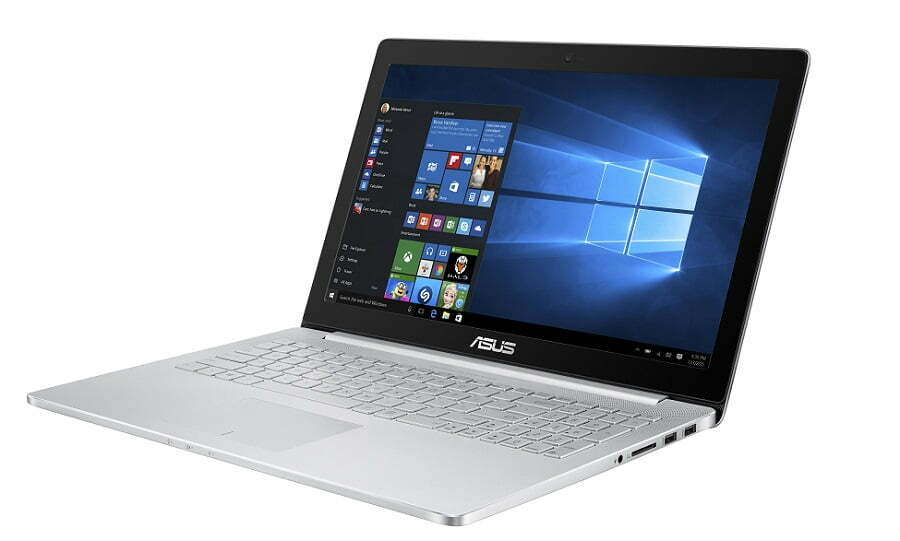
The ASUS Zenbook UX501VW sets itself apart slightly thanks to its onboard 15.6″ 3840 x 2160 full 4K touchscreen display, which was both a pleasure to look at and use while browsing through webpages, watching Netflix, or playing games. As is the case with most 4K touchscreens, the responsiveness overall was top-notch, and it was rare that we would find ourselves having to double-tap to get a touch to register like you might have to on lower resolution screens.
The display is also spec’d to meet the standards for creatives who need something they can take with them out of the film studio or graphic design firm, with 100% sRGB replication and 72% of Adobe RGB. This may not necessarily be enough for painters or designers who demand the best color accuracy possible, but is still plenty for the amateur who does photo editing on the side or works in a similar field.
Battery
If you’re looking for a laptop that lasts as long as you do, whether it’s gaming, streaming, or just running through numbers on an Excel spreadsheet, then the ASUS Zenbook UX501VW is definitely not the choice for you.
The Zenbook packs in some seriously primo components -like its 4K display and 512GB PCIe SSD – but as cool as having both those features is they can both take a serious toll on how long the onboard 6-cell battery lasts before puttering out.
During our tests which involved web browsing, gaming, and watching Netflix, the laptop only lasted a paltry 1hr and 24min until the percentage meter ticked to zero. Idle/web browsing was a bit better, but again, not by much as we were only able to stretch it to 4hr 09min before frantically searching for a place to plug in. If you plan on taking an extended trip away from the office or your standing desk here, be ready to bring that charger with you too.
Wrap Up
The ASUS Zenbook Pro UX501VW is a laptop that tries to be a lot of different things at once, in an effort to cast the widest net and get the most customers as possible under one brand. If you’re a student who needs a powerful laptop for modelling a molecule or a creative professional who demands a color accurate screen, this is definitely the pick for you.
But, if you’re looking for something that can game consistently or keep its battery alive long enough to last through a half-day lecture, you’re probably better off going with the MSI Ghost Pro 4K or Samsung Chromebook 2 instead. If the charge lasted a bit longer or the graphics performance was slightly higher we might give the Zenbook higher praise, but without those critical hits, it’s just a muddled, albeit beautifully designed laptop that doesn’t really know what it wants to be, or who’s supposed to buy it.
Read Next: Best Laptops for College 2018
Related Articles:
